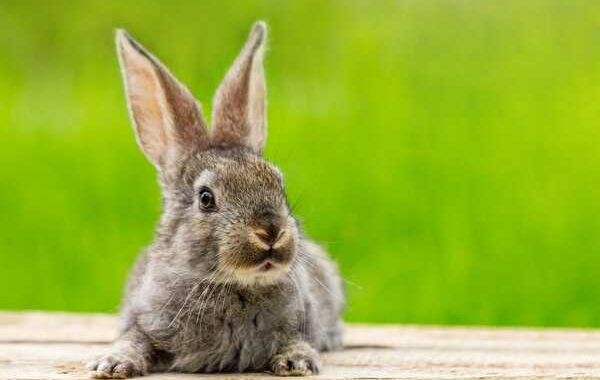Some types of hay can be confusing, from second-cut Timothy Hay to Alfalfa hay. Specialists know what hay your small animal needs to stay happy and healthy. Below, you will find all the types of Oxbow Hay available in Australia. Hay is classified according to its use, the amount of stem and leaves, and the protein, fiber, and fat levels. Understanding each type of pet is extremely important and beneficial to your pet. For example, that one from the year's first cutting is perfect for animals that need to lose weight.
Those from the second cutting of the year are good for animals of all ages. It has a perfect ratio of hay mixed with seed heads. That is the gold standard for all rodents. The other one, from the third cutting of the year, is more for picky, adult, recovering animals - needing to gain weight or those with dental problems. On the other hand, oatmeal is rich in fiber and protein and is recommended for young animals; it helps the growth of muscles and bones and is also recommended for animals allergic to other types of hay.
Timothy Hay for a Healthy Nutrition
Timothy Hay is the perfect choice for any rabbit breed, those showing interest in hay mixes, and those following a low-calcium diet. Suppose your pet does not consume enough hay or refuses it. In that case, you can try several tricks, such as mixing dried aromatic herbs and flowers into the hay or choosing hay varieties with flowers, tasty vegetables, or fruits. Remember that a rabbit or herbivore that doesn't consume enough hay will inevitably develop dental problems over time. Consult an exotic animal veterinarian regularly to be sure your pet is healthy.
Why is hay so crucial in a rabbit's diet? Rabbits should have unlimited access to fresh hay. First, it maintains the balance in the intestinal flora, especially in the cecum. Chewing Oxbow Hay Australia and moving it from one side of the oral cavity to another allows maintaining the molars' proper length and uniform abrasion. The long threads also help move the food content. Grass hay is the best forage, mainly because it has low amounts of protein and calcium. The most popular is Timothy, but that does not mean that other types are not ok.
What Kind of Hay Do You Give to a Rabbit?
Another good forage is alfalfa and clover. These are rich in protein and calcium and are indicated for growing animals in Australia, and their amount in the diet of mature animals should not be high. If the rabbit is not fed commercial food, it is worth giving it hay from different plant types. From the first mowing (often in June), it is usually poorer in fiber and more affluent in other nutrients. The most important rule is that any type of it is better than none. Although it is essential in the diet, hay cannot be its only element.
It's also worth trying to get Timothy Hay from good sources. The type of soil the plants grow on is later reflected in their composition. Each type of hay will only partially meet the nutritional needs of rabbits. Hay meets 35% of the daily calorie requirement (due to intestinal fermentation). A healthy and species-appropriate diet for a rabbit requires basic knowledge of its eating and digestive behavior. The rabbit's digestive system is designed to assimilate large amounts of hard-to-digest plant components rich in crude fiber. The ever-growing incisors and molars and the passive gastrointestinal tract depend on a continuous and regular food intake.
Continuous Feeding Is Essential for Rabbits

The molars wear down enough by constantly chewing and crushing fiber-rich food particles. They grow back up to an inch a month. If they are not worn enough, they become bent and too sharp. These problems later lead to massive tooth malocclusions, purulent infections, and jaw abscesses. The wrong and too high energy feed causes changes in rabbits' composition and number of intestinal bacteria. That, in turn, causes digestive problems, which often lead to diarrhea and which, in the worst case, can even cause the rabbit to die due to the formation of toxins.
A varied diet for rabbits also includes a selection of different vegetables. To find the right food for a rabbit, you can take the natural diet of wild rabbits as a model. They eat almost all day – whatever they can find, depending on the season. Therefore, a balanced diet for rabbits includes the following components: high-quality, permanently available Oxbow Hay, fresh, seasonal greens, leafy vegetables, and twigs as a supplement. On the other hand, fruit is only found on the menu in tiny quantities and only occasionally. Offer your rabbit fruit as a small reward snack occasionally.
Why Is Hay so Crucial to a Rabbit?
Hay is the primary food for rabbits. So, make sure your rabbit has enough throughout the year. That is the only way to ensure a healthy raw food intake and even wear on the teeth throughout the day. Exceptions may be made if the animal receives varied and sufficient greens. In any case, the most important thing for a healthy diet for rabbits is the diverse and balanced composition of the various components. Quality and composition are important. Good hay has a fresh meadow smell of deep green, rich in herbs and leaves with many tender and well-dried stems.
Combine elements from the different food groups. You can put it in special hay racks or hang it elsewhere. It also gives the rabbit an occupation and encourages it to exercise. There are many types of hay in commerce in Australia. Grass-rich meadow hay, for example, is the most varied and balanced hay for rabbit feed. Do not feed your rabbit exclusively this type of hay because of its high calcium content. Grass, with a high stem ratio, is an essential source of crude fiber. As with all ration components, variety is vital in hay.
Therefore, try to give the bunny different types of hay. This way, the rabbit can choose the plants it needs for itself. Refrain from feeding your rabbit damp, moldy, or rotten hay. Rabbits are susceptible to molds and mycotoxins (toxins produced by fungi). Be sure to store Oxbow Hay in bags that allow air to circulate (for example, a canvas bag) and not in plastic bags. By the way, hay stored for a long time loses its fresh smell and nutrient content. At the same time, it becomes drier and irritates sensitive rabbits' respiratory tract.








